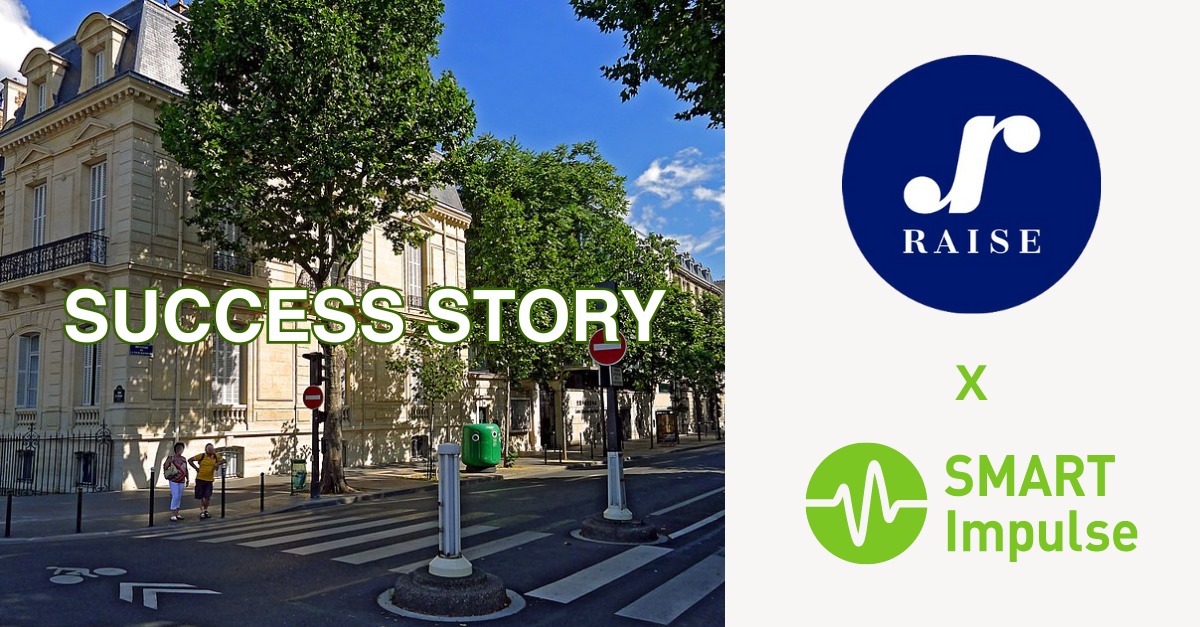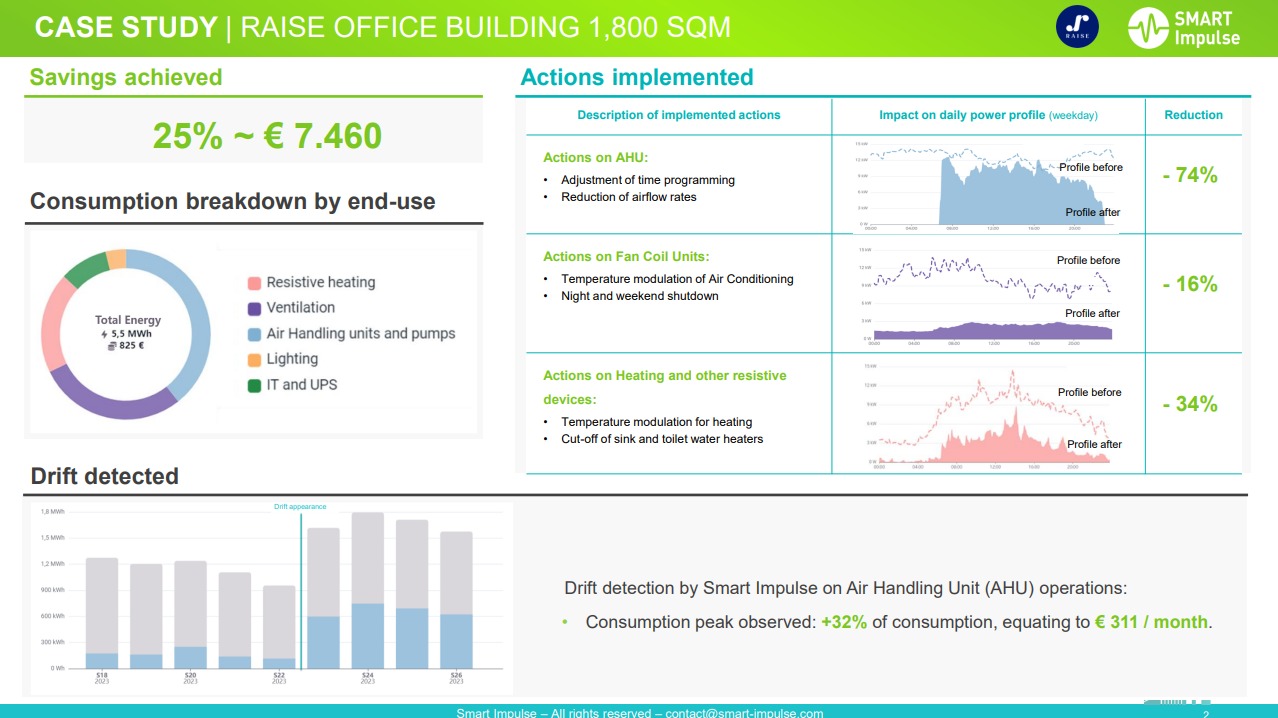
Energy Efficiency at RAISE’s headquarters
Raise optimises the energy efficiency of its headquarters and reduces its electricity consumption by 25% in less than a year.
Discover in this article how RAISE improved the energy efficiency of its headquarters by implementing the Smart Impulse solution, with a pragmatic and effective approach to reducing its energy consumption.

RAISE’s Energy Efficiency Challenges
In 2021, RAISE already occupied one of the most efficient buildings in its landlord’s property portfolio. However, the company decided to go further in 2022, particularly in response to the French government’s 2022 demand to reduce companies’ energy consumption by 10% amid an energy crisis.
Their energy efficiency objective was clear: to optimise the energy consumption of their headquarters. Located at Tour Maubourg and built in 1869, the building covers an area of 1862 m². Its annual electricity consumption amounts to 166,650 kWh, costing €28,000.
The challenge was to analyse electrical usage by equipment to establish an effective action plan. This plan had to meet the state’s sobriety plan requirements while also preparing an ambitious climate strategy (*), in line with RAISE’s commitment under the Science Based Targets initiative (SBTi) (**): to reduce their energy consumption by 42% by 2030.
(*) A company climate strategy aims to make the company’s activities compatible with a net-zero emissions world by 2050.
(**) The SBTi provides companies with a clearly defined path to reduce emissions in line with the goals of the Paris Agreement.
Implementation of the Solution
The Smart X, a solution proposed by Smart Impulse, was installed on the low-voltage main switchboard (TGBT) of the headquarters. This solution, installed in less than an hour and without any power cuts, enables communication via 3G/4G and provides access to consumption data by usage.
Initial Findings and Actions for Better Energy Efficiency
With the Smart X, RAISE identified that over 80% of its consumption was due to ventilation and heating. Based on this data, RAISE adjusted the control of the Air Handling Units (AHU) and the Heating, Ventilation, and Air Conditioning (HVAC) systems by shutting them down at night and on weekends.
Results and Actions Implemented
These actions led to a 25% reduction in electricity consumption between 2022 and 2023, saving €7,460, with a return on investment in just 4 months.
Detection of Drifts
However, the transition from the winter to the summer programme revealed an increase in energy consumption, particularly from the AHUs.
- Mid-season and summer period: The average weekly consumption of the AHUs was 201 kWh.
- After switching to the summer programme: This consumption rose to 665 kWh per week, illustrating a significant increase due to the change in programming.
- From May to October (switching to the winter programme): The total consumption of the AHUs reached 5,637 kWh.
If the trend had persisted: The total consumption of the AHUs for this period would have been 13,637 kWh.
Thanks to the Smart Impulse solution, RAISE quickly identified this increase in consumption and requested an adjustment in programming from their operator. This proactive intervention prevented an additional consumption of 7,965 kWh, equivalent to €1,361 in avoided energy costs.
Conclusion of the Energy Efficiency Action Plan Implementation
By relying on factual and educational information regarding consumption by usage, RAISE was able to:
- Align stakeholders: Clear communication on consumption data facilitated collaboration and engagement of all stakeholders towards a common goal.
- Target optimisation actions: RAISE focused its efforts on interventions with the greatest impact on energy efficiency, enabling substantial savings and a significant reduction in their carbon footprint.
- Monitor and ensure the effectiveness of actions: Continuous monitoring of implemented measures guarantees their effectiveness and the sustainability of the results achieved.
- Detect drifts: Proactive monitoring allowed RAISE to quickly detect and correct deviations, as illustrated by the management of their AHUs’ seasonal programmes.
All these steps led RAISE to achieve and even exceed their energy performance objectives, demonstrating their leadership in environmental responsibility.

More articles are available on our blog:



